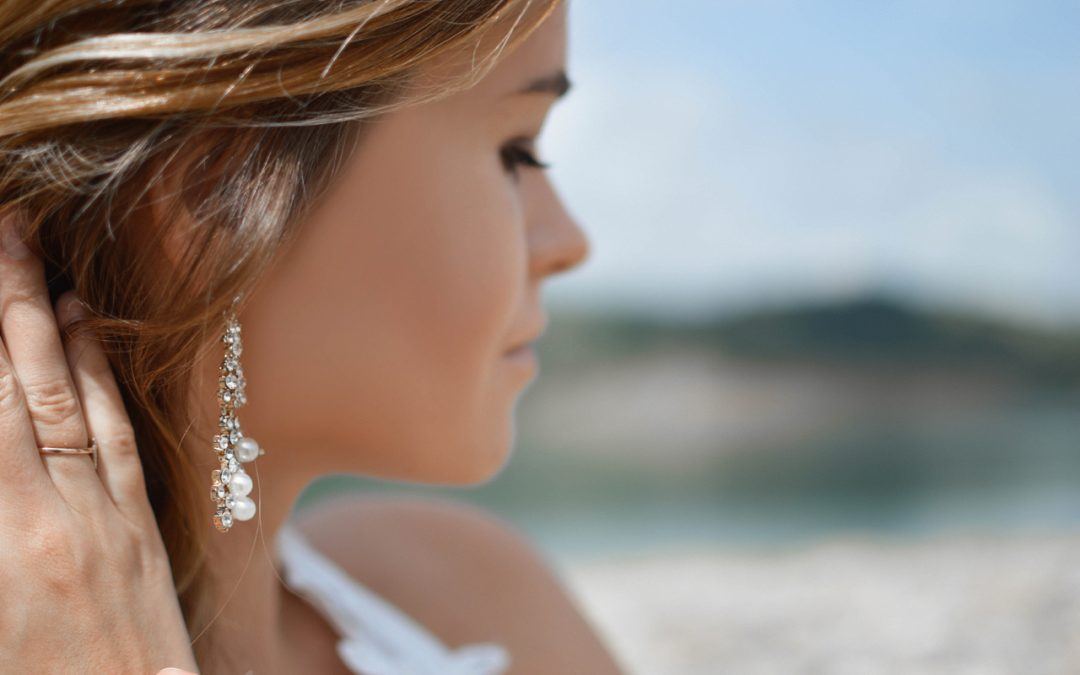Jewelry is deeply personal. Most of us wouldn’t even consider casually giving common, inexpensive items of jewelry as an expression of gratitude or appreciation – like a mug or potted plant would be. Rather jewelry inherently has an element of intimacy that isn’t readily expressed in words but understood nonetheless. The history of jewelry has long represented special relationships and is usually given with a specific meaning. So how did jewelry come to symbolize love, friendship, and a reflection of deeply personal feelings and relationships?
THE HISTORY OF JEWELRY
Jewelry has an incredibly fascinating and vast history, one that I could not possibly do justice in a short post. Yet, hopefully, I’ll curate a bit of interest and intrigue that spurs you on to a deeper search in this incredibly interesting topic.
For most of history, jewelry was worn for very specific purposes, unlike the habits of today. Unknown to most, it was primarily (but not exclusively) worn by men until the 19th century. For most of history, jewelry served as a source of communication. It was a universal and accepted form of adornment that could reflect anything from:
- Rank
- Power
- Position
- Social status, wealth
- Religious beliefs
- Honors bestowed as a reward for service
Jewelry was also used as protection as many cultures believed certain stones and metals held mystical powers.
It wasn’t until the 1800s that jewelry became more commonplace within fashion as the popularity of naturalistic designs such as flowers that reflected friendship and other sentiments made their way into jewelry design. Combined with the ancients beliefs of gemstones, jewelry began to tell a story.
JEWELRY AS A SYMBOL OF LOVE
The circular form of a wedding band has long represented eternity and thereby associated with marriage since Ancient Egypt. Additionally, in the ancient times, precious metals, jewels, and jewelry were given as gifts in the form of a dowry – the purchase price of a bride.
Within the Victorian era, jewelry became a love language – and not just romantic love but also friendship. Additionally, the popularity of using jewelry as a gift to celebrate a life event increased dramatically. As a result, jewelry became saturated with sentiment, resulting in an entire culture of secret communication within the use and design of gemstones and styles. The Victorians adopted the ancient spiritual beliefs associated with stones and combined their meanings with shapes and colors to create a very specific and personalized adornment.
COMMON SYMBOLS OF LOVE AND FRIENDSHIP
Each gemstone has a myriad of meanings derived from lore and ancient spiritual beliefs. Here are a few that reflect love, virtue or other sentiments of a close relationship:
- Turquoise: Love, loyalty, good health
- Pearls: Beauty and innocence. (Bad luck as a marriage gift, but perfect for a young girl entering womanhood or to a wife as a reflection of adoration.)
- Amethyst: Deep love
- Carnelian: Vitality, confidence, sexuality
- Emerald: Love, compassion
- Ruby: Passion
Interestingly, the diamond did not represent love until recent times as a result of the well-known De Beers family promotion. (To learn more how the diamond came to represent modern-day love and marriage, read more here. ) The meanings and symbolism of jewelry and gemstones is an extremely vast topic and I’ve barely even scratched the surface!
[Link: A History of Jewelry]
CONTINUING THE CRAFT
When jewelry became mass-produced, it lost much of the deeply personal and intimate meanings within design, however, our perception of jewelry as a reflection of affection and friendship has remained. Yet, many jewelers such as myself, continue the craft and tradition of designing and creating custom jewelry that reflects the deeply personal stories and affections between the wearer and the giver. We would love to help you craft your story!

